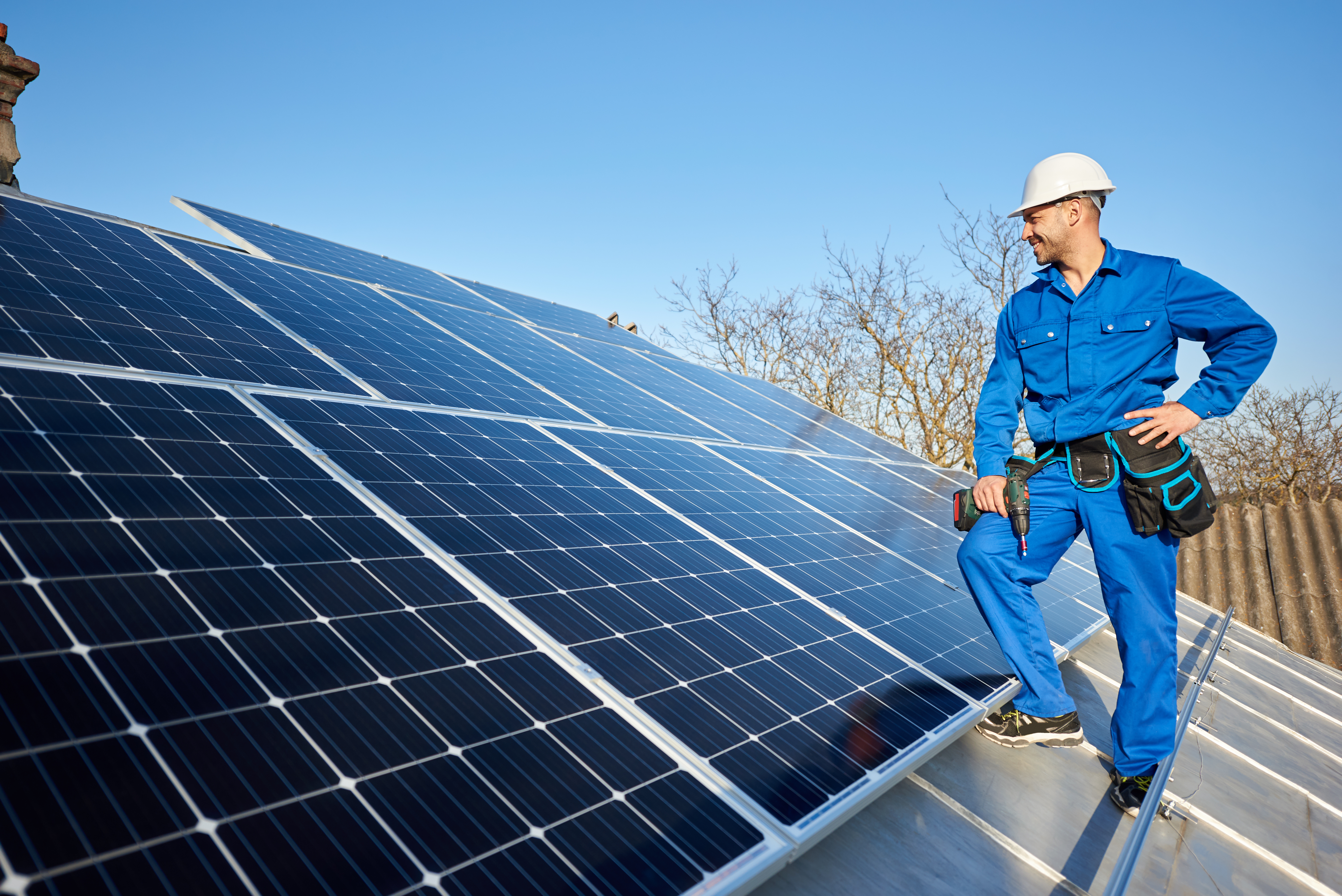As the demand for energy storage and solar battery options surges, new financing options provide greater flexibility for homeowners considering these purchases. Buyers can look to storage solutions such as Panasonic's EverVolt™ to increase their energy independence around the clock, provide reliable emergency power solutions, and improve the ROI from their solar panel system.
In today’s market, these buyers are often looking for solutions that reduce their initial out-of-pocket costs or have flexible payment options. Enter solar financing solutions.
Emerging Solutions for Financing Renewable Energy
Financing models for renewable energy have long been available for solar systems, but the ability to finance battery storage — or a total home energy system that includes both solar and storage systems — is still emerging and far less common. In many cases, companies finance solar panels through secured or unsecured loans.
Finding funding to support energy storage solutions has been a greater challenge.
“The way the market is today, solar financing is a very well-traversed area,” says Bruce Chandler, regional sales manager at Panasonic USA. “However, battery storage technologies really just hit the main theater this year and last year. It’s really been growing by leaps and bounds, but the financiers — many of them don’t even finance storage — or haven’t, historically.”
How to Finance a Solar System and Battery Storage
Navigating the world of solar finance can be unfamiliar, especially to consumers who have typically dealt with more traditional lending options. Many consumers pay in full upfront or access other financing mechanisms, such as a homeowner’s line of credit or personal loan. However, specialized options exist for solar financing.
There are two primary options for financing a system: leasing and loans. Leasing a solar solution provides access to solar technology without upfront costs. However, since you don’t own the system, there are drawbacks — including how much you save on energy costs, the inability to use tax credits, and once the lease runs out the system typically needs to be bought out by the homeowner or removed by the financier (at the homeowner’s option).
Another option is obtaining a solar loan. Solar loans can be secured with collateral or as unsecured loans that operate more like a personal loan. Within the world of solar loans, factors to consider include:
- Interest rates or APR
- Dealer fees, which are similar to origination fees in other loan types
- Length of the loan, as in how many years you’ll have to pay it back
- What the loan covers, from solar systems to battery storage options
Financing Helps Buyers Take Action for Tax Benefits
Many homeowners are considering solar solutions and battery storage to capture tax benefits that are expiring. The Investment Tax Credit (ITC) offered a 26% tax credit in 2020, which drops to 22% in 2021. The ITC is scheduled to be phased out in 2022 if not renewed. State and local tax incentives may also be in play.
“People are continuing to buy energy storage and solar, really in record numbers. Part of that is because the ITC tax credit is scheduled to drop again in 2021 and will be the last year that it’s available,” says Chandler. With financing, homeowners have the flexibility to access financing and then reduce their balance significantly with the tax credits they capture later or continue paying over time.
Removing The Risk of Investments During Disruptive Times
Solar financing is in the headlines as individuals forge ahead. From wildfires in California to managing shifts in remote work in the face of the COVID-19 pandemic, this year has introduced new levels of uncertainty. Homeowners want to get the most value out of their solar solutions when the grid goes down or the weather is inclement, and increase the resiliency in their systems and their lives. Battery storage solutions like EverVolt can help.
To provide certified installers and prospective battery buyers a greater range of financing options and flexibility, Panasonic has partnered with Service Finance. The PowerOn financing program is available exclusively to EverVolt certified installers. Installers get access to an easy-to-use online portal that offers instant funding decisions, 50% on project acceptance and 50% on completion, and competitive rates.
Consumers benefit from features ranging from competitive interest rates to flexible terms. While Panasonic’s certified installers work with a variety of financing solutions, this is one more tool in their arsenal to make green energy and increased independence even more achievable for more homeowners.
“We want it to be easier for our installers, in a couple of clicks, to register with them and then start submitting deals for consideration. An important part of this is the seamlessness for our installers in using a major partner that has experience in doing these types of financing and can keep it simple,” notes Chandler.
The same flexibility benefits consumers. Today’s consumers have a range of options available, from taking funds out of savings to tapping into a home equity line of credit (HELOC) or other resources. But, notes Chandler, many buyers may not want to address the refinancing process or may not want to reduce the equity they have in their home. Solar loan options provide another route to consider on the road to energy independence.
Financing Renewable Energy is More Affordable Than Ever
Solar systems are providing homeowners with cost-effective, environmentally friendly energy options. As homeowners seek strategies to increase their energy independence, turn their solar systems into reliable power sources even when the grid is down, and get more out of their investments, battery storage is becoming a major trend. Flexible financing puts the benefits of energy storage within reach.
For more insights on how a total home energy system can make financial sense for you, visit Panasonic's Green Living blog. Ready to take the next step? Connect with a verified Panasonic solar installer to get your questions answered.






